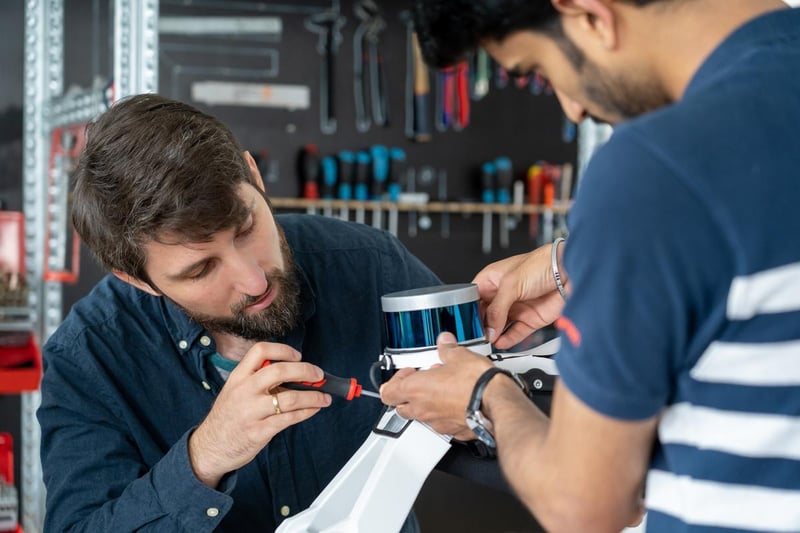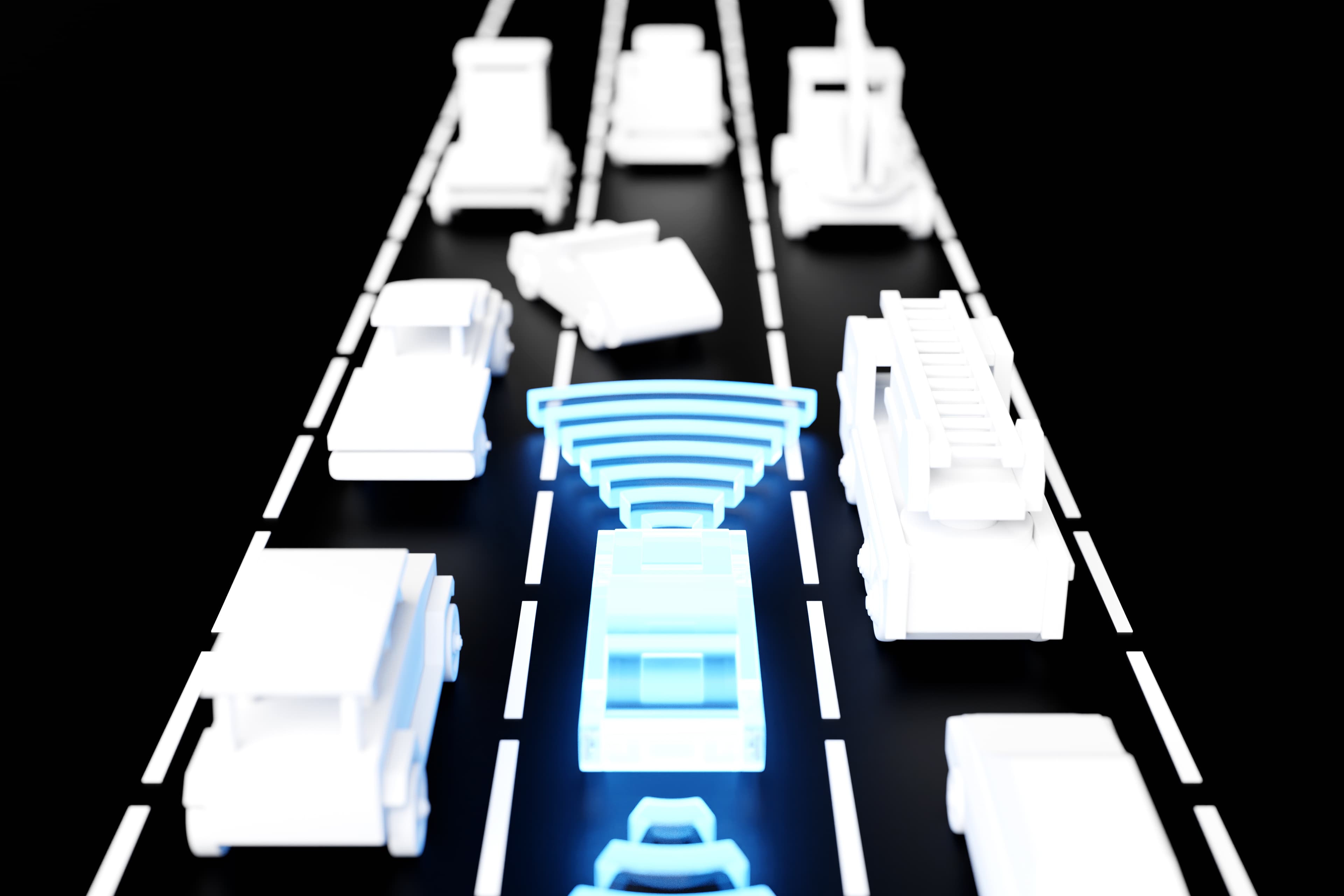Let's settle it: is it LiDAR or lidar? Find out as Sean Higgins answers some of the most common questions about this technology.
Recently, we published a piece that walked you through the basics of lidar. We covered what it is, how it works, what other technology goes into a 3D scanner, and the applications you might use a 3D scanner for. (If you’re new to lidar and want to learn more, start with that article first.)
Then we asked (and answered) the question: What’s better for building capture, lidar or photogrammetry?
Even if you’ve read both articles, you might still have a few burning questions about lidar. We’ll answer some more of those today. By the end, you’ll know: What’s the difference between terrestrial, mobile, and aerial scanners? How many different kinds of lidar sensors are there? How do they work?
And, most importantly: Should you call it LiDAR or lidar?
What are the different kinds of lidar scanners?
Just like there are a lot of ways to turn a lidar sensor into a laser scanner, there are many different kinds of 3D laser scanners. Here are the most common options.
- Terrestrial laser scanners (TLS): These scanners sit on a tripod and spin to capture the environment. It is the first type of lidar scanner used extensively for survey and mapping applications and still provides the absolute highest accuracy. However, it takes longer to perform a full capture than other methods, like mobile lidar.
- Mobile lidar: Sometimes called mobile mapping systems, these 3D laser scanners capture while you move. That might mean the lidar scanner is strapped to the top of a vehicle, held in your hand, or worn on your body. To do this, these devices exploit a specialized technology called SLAM (simultaneous localization and mapping).
Mobile lidar devices can perform much faster capture than TLS, whether in an outdoor or interior environment. And, the most recent devices have become accurate enough for all but the most demanding applications. (To learn more about SLAM, check out our educational guide here.)
- Aerial lidar: These scanners are mounted to an aircraft of some kind to be flown over an area for capture.
You might hear this term used to describe lidar scanners that mount to a UAV to capture spatially contained areas like fields, a bridge, or the roof of a building.
The term can also describe the large lidar scanners that are mounted to high-altitude airplanes for wide-area topographical mapping. See the United States Geological Survey (USGS) 3DEP site for a great example of this.
What are the different kinds of lidar sensors?
When we discuss how lidar works, we usually refer to the concept of time of flight. This is the operating principle most commonly used in lidar today — but there are other lidar types you might run into from time to time. Here’s a quick rundown.
- Time of flight: You probably know this one already. Fires a laser, and measures how long it takes to return to the sensor (its time of flight). Since the onboard computer knows the speed of light and the laser’s time of flight, it can calculate the distance to the object.
- Phase-shift lidar: This type of lidar uses light, just like time of flight lidar. The difference is that this system emits an uninterrupted beam rather than pulses, and measures waveforms rather than time to determine distance.
Here’s how: The lidar scanner modulates the beam, reducing and increasing the energy at a constant rate. If you mapped the energy levels over time, the chart would look like a sine wave.
When this energy hits an object, it reflects back to the sensor. By comparing the difference between the original wave and the reflected wave – or their phase difference – the sensor can determine the distance to the object. This is faster than time-of-flight lidar but has weaknesses that we won’t get into here. - Solid-state lidar: Simply put: Lidar on a microchip.
As I once wrote in an article on the technology, a good way to understand this is to compare lidar sensors to computers. In the early days of computers and lidar, units were big. They were constructed of separate mechanical parts, as well as the transistors, resistors, and capacitors necessary for functioning.
With the advent of the microchip in computing, many of these parts were miniaturized significantly. Solid-state lidar does the same thing for lidar, making it popular for use in applications like robotics and self-driving cars.
- Flash lidar: You can think of a flash lidar as a single solid-state lidar chip that acts as both the camera and the flash needed to capture a 3D image.
To capture, every pixel on the chip fires light, which floods the field of view. When the light bounces off of objects and returns to the sensor, every pixel also captures 3D data.
In other words, a flash lidar captures its whole field of view with a single pulse, like a snapshot. That’s why Wikipedia helpfully describes it as a camera that captures 3D information instead of colors.
LiDAR vs. lidar
You have probably seen the name of this technology stylized both ways. Apple chose the first way. Lidar Magazine chose the second. Which is it?
In its early days, it was called “LiDAR,” which is an acronym for Light Detection And Ranging. But in recent years, LiDAR has become an important enabler of popular technologies like the metaverse. By 2022, the word has fully entered common usage, and now you’ll find that it’s more commonly referred to as simply “lidar.”
But there’s some (very mild) controversy about this — and some manufacturers and publications still use the more traditional “LiDAR.” For my part, I think “lidar” is the way of the future. Look at what happened to the word “radar,” which used to be an acronym for Radio Detection And Ranging.
When have you ever seen the word RaDAR in print? I thought so.
Any other questions?
I’ve tried to make our recent lidar explainers as comprehensive as possible without getting too far into the weeds. If you have any other questions about lidar that you’d like me and the experts at NavVis to answer, please let us know! You can also learn more about the NavVis Reality Capture Solution here.
Sean Higgins is an independent technology writer, former trade publication editor, and outdoors enthusiast. He believes that clear, buzzword-free writing about 3D technologies is a public service.



